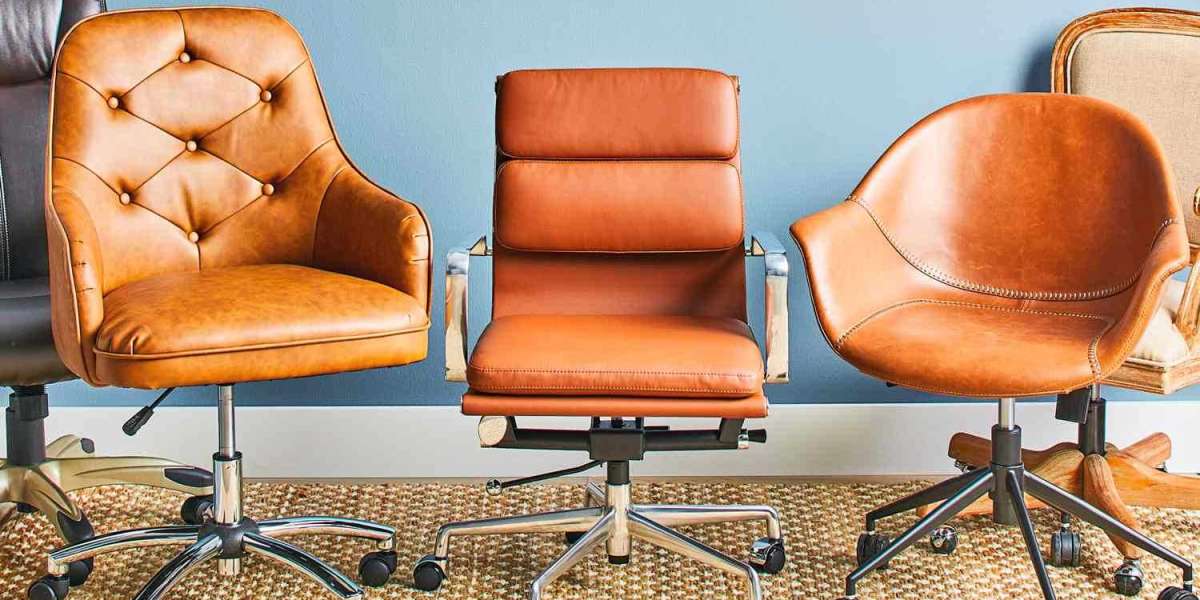As the conversation around sustainability becomes more critical, many businesses are seeking eco-friendly solutions to minimize their environmental impact. One area where this shift is particularly notable is in office furniture. Choosing sustainable office furniture not only supports a healthier planet but can also enhance your company’s brand image, improve employee well-being, and foster a positive work environment. Here’s a comprehensive look at eco-friendly office furniture options and considerations for making sustainable choices in the workplace.
1. Understanding Eco-Friendly Materials
The materials used in office furniture play a significant role in its sustainability. Here are some materials to consider:
Recycled Materials: Furniture made from recycled materials, such as reclaimed wood or recycled plastics, reduces the need for new resources and helps divert waste from landfills.
Sustainable Wood: Look for furniture crafted from sustainably sourced wood, certified by organizations like the Forest Stewardship Council (FSC). These certifications ensure that the wood is harvested responsibly, promoting reforestation and biodiversity.
Bamboo: Bamboo is a fast-growing, renewable resource that makes for a durable and sustainable material. Its natural properties make it suitable for various furniture types, including desks and chairs.
Natural Fabrics: Opt for upholstery made from natural, organic materials such as cotton, wool, or linen. These materials are biodegradable and often produced without harmful chemicals.
Low-VOC Finishes: Volatile organic compounds (VOCs) can be harmful to indoor air quality. Choosing furniture with low or zero VOC finishes and adhesives contributes to a healthier workplace environment.
2. Furniture with Longevity
Sustainable furniture is not just about the materials; it also focuses on durability and longevity:
Quality Craftsmanship: Invest in high-quality furniture designed to last. Durable products reduce the frequency of replacements, minimizing waste over time.
Timeless Design: Classic designs that remain stylish over the years contribute to sustainability by reducing the need for frequent updates and replacements.
Repairable and Upgradable Options: Look for furniture that can be easily repaired or upgraded rather than replaced. This practice extends the life of the furniture and reduces waste.
3. Modular and Flexible Designs
Modular office furniture offers a sustainable solution by allowing businesses to adapt their workspace without significant waste:
Modular Systems: These systems can be reconfigured to meet changing needs, allowing businesses to maximize space efficiency and reduce the need for new furniture.
Multi-Functional Furniture: Pieces that serve multiple purposes, such as desks that convert to meeting tables, reduce the overall amount of furniture needed in the office.
Collaborative Spaces: Designing collaborative spaces with flexible furniture arrangements can foster teamwork while minimizing the environmental footprint.
4. Supporting Local Manufacturers
Choosing furniture from local manufacturers can have positive sustainability impacts:
Reduced Carbon Footprint: Sourcing furniture locally reduces transportation emissions associated with shipping products from distant locations.
Community Support: Purchasing from local artisans and manufacturers supports the local economy and encourages sustainable practices within the community.
Transparency: Local manufacturers may provide better transparency regarding their sourcing and manufacturing processes, allowing businesses to make informed choices.
5. Second-Hand and Upcycled Furniture
Buying second-hand or upcycled furniture is an effective way to practice sustainability in the workplace:
Vintage and Antique Pieces: Sourcing vintage or antique furniture not only adds character to the office but also prevents these items from ending up in landfills.
Upcycling: Consider upcycling furniture that may be outdated or damaged. This creative approach allows for unique, customized pieces while extending the life of existing furniture.
Thrift Stores and Auctions: Explore thrift stores, auctions, or online marketplaces for gently used office furniture at a fraction of the cost of new pieces.
6. Designing for Energy Efficiency
The design of your office furniture can also contribute to energy efficiency:
Ergonomic Designs: Invest in ergonomic furniture that promotes good posture and reduces strain. Healthier employees can lead to increased productivity and fewer health-related absences.
Natural Light Utilization: Positioning desks and workstations to maximize natural light reduces the reliance on artificial lighting, lowering energy consumption.
Smart Furniture: Some modern office furniture incorporates smart technology that can monitor energy use and help optimize the workspace for efficiency.
7. Creating a Green Office Environment
Sustainable office furniture is just one aspect of creating an eco-friendly workplace. Consider these additional elements:
Indoor Plants: Incorporating plants into the office can improve air quality, enhance aesthetics, and boost employee morale. They contribute to a greener environment without significant costs.
Recycling and Waste Management: Implement recycling programs for office waste, including paper, plastics, and old furniture, to promote a culture of sustainability.
Employee Engagement: Involve employees in sustainability initiatives by encouraging them to share ideas and participate in eco-friendly practices. This creates a sense of ownership and commitment to environmental goals.
8. Certifications and Labels
When purchasing office furniture, look for specific certifications that indicate sustainability:
FSC Certification: As mentioned earlier, furniture certified by the Forest Stewardship Council ensures responsible sourcing of wood products.
GREENGUARD Certification: This certification indicates that products meet stringent chemical emissions limits, contributing to better indoor air quality.
Cradle to Cradle Certification: This certification assesses the sustainability of a product's entire lifecycle, from material sourcing to disposal.
Conclusion
Investing in eco-friendly office furniture is a significant step toward building a sustainable workplace. By choosing materials that minimize environmental impact, selecting durable and flexible designs, supporting local manufacturers, and considering second-hand options, businesses can create a greener office environment. Additionally, fostering a culture of sustainability among employees enhances overall engagement and commitment to eco-friendly practices. As the demand for sustainable solutions continues to grow, embracing eco-friendly office furniture will not only benefit the planet but also positively impact employee well-being and productivity, making it a smart choice for any organization.








